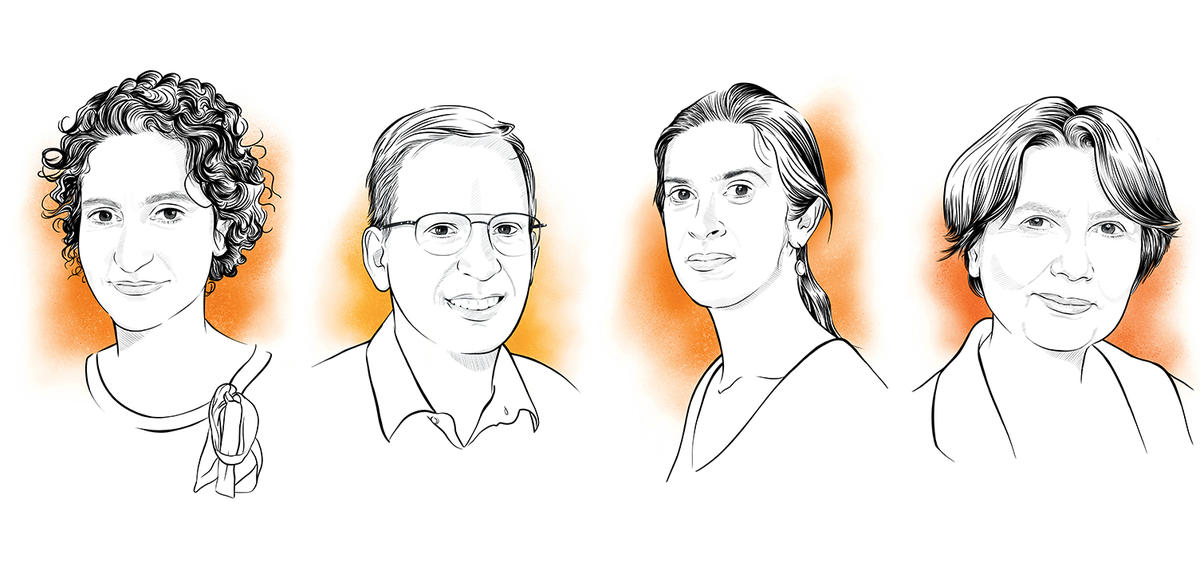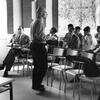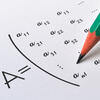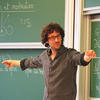You are here
French Mathematics in Rio

The International Congress of Mathematicians (ICM), held in Rio de Janeiro between August 1 and 9, 2018, invited French mathematicians to deliver 4 of the 20 prestigious plenary speeches, namely Catherine Goldstein, mathematics historian, Vincent Lafforgue, a specialist in algebraic geometry, and Nalini Anantharaman and Sylvia Serfaty, both of whom specialize in mathematical physics. Among the speakers at the other conferences, nearly 1 in 7 is affiliated with the French school, and with the CNRS in particular. This delegation of 34 speakers in all (4 plenary speakers and 30 speakers at the theme-based sessions), one of the largest along with the United States, underscores the excellence of French research in this discipline.
The only congress of worldwide importance to touch on all of the themes of mathematics and which is attended by thousands of researchers, “ICM 2018 also provides an occasion to celebrate the tradition of cooperation between France and Brazil in mathematics, particularly regarding dynamic systems, but also in numbers theory and in algebraic geometry,” explains Marc Hindry, researcher at the Mathematics Institute of Jussieu-Paris Rive gauche (IMJ-PRG).1 “This close collaboration dates from the 1980s, with the posting in Rio of several scientists from the Impa2 contingent such as Jean-Christophe Yoccoz, winner of the Fields medal in 1994.”
ICM is also the stage for awarding the illustrious Fields medal, the equivalent in mathematics of the Nobel Prize. Only mathematicians aged under 40 years are eligible and between two and four medals are given at each Congress, which is held every four years. In 2014, French and Brazilian mathematician Artur Ávila, a theoretical expert on dynamic systems, was awarded a Fields medal while only 35 years old. At this same Congress, a Fields medal was given for the first time to a woman, Maryam Mirzakhani from Iran, a professor at Stanford University who sadly passed away in 2017 at the age of 40.
____________________________________________
Sylvia Serfaty
A specialist in partial differential equations and mathematical physics, she is a professor with the Courant Institute at New York University, where she is currently on a posting from Laboratoire Jacques-Louis-Lions3 in Paris. Her work focuses on the mathematical analysis of models and equations posed by physicists, for instance in the field of superconductivity. Winner of the Henri-Poincaré prize in 2012, this young woman is particularly concerned about “passing on the torch to younger students.” Since being selected by ICM, she has given much thought to “the delicate issue of public exposure” afforded by a plenary conference, and in particular the possibility of “touching on as many topics as possible to attract the widest possible audience, and presenting her work, but also (…) an entire area of research, in sufficient detail to provide flesh and bone, but without losing her audience… and all within a mere hour!” she explains.
____________________________________________
Vincent Lafforgue
A great admirer of Alexandre Grothendieck, considered one of the most important mathematicians of the 20th century, this researcher at the Institut Fourier4 is an expert in arithmetic geometry. This original domain incorporates algebraic geometry with arithmetic, as well as ideas derived from topology and category theory. Winner of the Servant prize in 2014 and of the CNRS Silver Medal in 2015, he is delighted to be taking part in an event that “raises self-awareness among the mathematical community as well as awareness of its full potential.” He insists on the following: “I have become personally aware of the urgent need for mathematicians—however far removed from applications, like myself—to seek out ways in which they can help limit the severity of the current ecological crisis. I generally prefer to work on pure mathematics without thought for immediate applications, but the current technological emergency warrants making an exception to this principle.”
____________________________________________
Nalini Anantharaman
Working at the frontier between mathematics and physics, she is studying quantum chaos. “A system is chaotic when it undergoes great behavioral differences over time resulting from minor changes to its initial conditions, as illustrated by the famous butterfly effect,” explains Clotilde Fermanian, researcher at the Laboratoire d’analyse et de mathématiques appliquées.5 “A remarkable mathematician with the ability to adopt an extremely sharp and highly personal vision of a given problem,” as her colleague noted, Nalini Anantharaman has in particular obtained important results concerning Schrödinger’s equation and the wave equation. Winner of the Jacques-Herbrand prize of the Académie des sciences in 2011 and of the Henri-Poincaré prize in 2012, she served as vice president of the Mathematics Society of France from 2010 to 2012. She is currently a member of IRMA6 in Strasbourg, and she is involved in the LabEx Institute for research in mathematics, interactions and applications, of which she became director a few months ago.
____________________________________________
Catherine Goldstein
A mathematician and historian of mathematics, “she certainly figures among the leading minds in her discipline in France today. Her learning spans the entire field of mathematics as well as history, historiography, sociology, philosophy and literature,” says Norbert Schappacher, university professor at IRMA in Strasbourg. The invitation extended to her by ICM to give a plenary speech serves as testimony to a mathematical domain that overlaps with human sciences, in which France is the European leader. It also provides an opportunity to show that far from being a discipline bogged down in theorems, mathematics is also the outcome of “an extremely complex and frequently surprising process,” insists Schappacher. A researcher at IMJ-PRG, Goldstein is in particular the author of the book “Un théorème de Fermat et ses lecteurs” ,7 and she is co-director of a project concerning the influence of the First World War on mathematics and mathematicians in various countries, from which a collection of essays was published in 2014 under the title The War of Guns and Mathematics.8
- 1. CNRS/Sorbonne Université/Univ. Paris-Diderot.
- 2. Institut national de mathématiques pures et appliquées. It houses the Jean-Christophe-Yoccoz mixed international unit (CNRS/Impa).
- 3. Unité CNRS/Sorbonne Université/Univ. Paris-Diderot.
- 4. CNRS/Université Grenoble Alpes.
- 5. CNRS/Univ. Paris-Est Marne-la-Vallée/Univ. Paris-Est Créteil Val-de-Marne.
- 6. Institut de recherche mathématique avancée (CNRS/Univ. de Strasbourg).
- 7. Presses universitaires de Vincennes, coll. “Histoires de science”, 1995.
- 8. American Mathematical Society, 2014.
Explore more
Author
Science journalist, author of chilren's literature, and collections director for over 15 years, Charline Zeitoun is currently Sections editor at CNRS Lejournal/News. Her subjects of choice revolve around societal issues, especially when they interesect with other scientific disciplines. She was an editor at Science & Vie Junior and Ciel & Espace, then...










